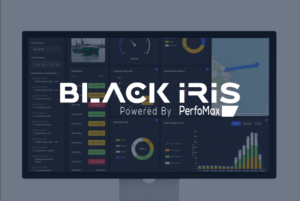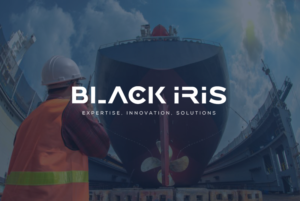The Future of Shipping: 5 Technologies for Retrofitting and Designing Future-Ready Vessels
The maritime industry is poised for a significant transformation driven by the advancements of the Fourth Industrial Revolution (Industry 4.0). The rapid prototyping and testing of new technologies, particularly in the post-Covid era, are accelerating the development of “Smart Ships” that promise to become the norm in the near future. This article explores five key technological applications that fleet operators and shipbuilders should seriously consider when either retrofitting existing vessels or designing and commissioning new ones to ensure they meet future operational standards.
- Integration of the Internet of Things (IoT): As the viability and implementation of IoT-based frameworks improve, it becomes increasingly crucial for shipping companies to consider the benefits of real-time cloud-based data acquisition and monitoring. This approach offers a significant advantage over traditional Noon Log reports, which are prone to human error and inconsistencies due to manual data compilation and individual interpretation. Furthermore, advancements in cloud storage technology, driven by widespread adoption across various industries, offer a cost-effective and simplified solution for data storage and retrieval.
Smart Tip: Seek developers and service providers with expertise in maritime operations who can thoroughly analyze your specific needs and assess the risks and benefits of investing in IoT technologies.
- Real-Time Data Monitoring: Existing vessel monitoring and sensor data acquisition systems often suffer from fragmented and non-standardized data. This fragmented data is cumbersome to compile and analyze, leading to delays and compromised monitoring accuracy. Fortunately, standardized real-time monitoring systems, widely used in other industries, offer a solution to these challenges. By integrating standardized real-time monitoring systems, shipping companies can expect to benefit from:
- Enhanced Safety: Real-time data allows for faster identification and response to potential safety hazards.
- Quicker Decision-Making: Access to accurate and timely data facilitates better and more informed operational decisions.
- Ease of Compliance and Reporting: Real-time data simplifies the process of complying with regulatory requirements and generating required reports.
- Non-Invasive Data Acquisition: Retrofitting existing vessels presents unique challenges for data acquisition upgrades. Traditional data acquisition methods involve manual procedures and sensors requiring complex retrofitting, often leading to ongoing maintenance needs. Non-invasive sensor technology and data acquisition utilizing Industrial Internet of Things (IIoT) offer significant advancements in this area:
- Equipment Integrity Preservation: Non-invasive technology minimizes the risk of damage to existing equipment during upgrades.
- Condition-Based Maintenance: Real-time data allows for proactive maintenance based on actual equipment condition, reducing unnecessary maintenance activities.
- Continuous Evaluation and Monitoring: Non-invasive systems enable continuous data collection and monitoring, providing a more comprehensive picture of vessel health and performance.
- No Downtime for Retrofit: Non-invasive upgrades minimize downtime associated with traditional retrofitting procedures.
Smart Tip: Even basic data acquisition focused on monitoring machinery utilization can reveal insights into inefficient practices and non-essential equipment usage.
- Black Box Modeling: Black box modeling, a data-driven decision-making technique borrowed from financial technology and statistical analysis, offers valuable insights for maritime operations. Black box models in engineering represent mathematical models focused solely on the input-output relationship, without delving into the internal workings of the system. These models can be used in maritime applications for:
- Baseline Establishment: Establishing a baseline for key operational parameters.
- Data Quality Assessment: Evaluating data quality and identifying inconsistencies.
- Operation Recognition: Employing historical data to identify patterns and predict vessel behavior under specific conditions.
- Predictive Maintenance: Enabling predictive maintenance strategies based on data-driven insights.
- Performance Optimization: Identifying opportunities for optimizing vessel performance and reducing life-cycle costs.
These black box models leverage existing machine learning algorithms to create a reliable database of input-output correlations.
Smart Tip: Black box models allow for valuable data analysis without compromising sensitive operational details.
- Digital Industry 4.0: The imminent arrival of Industry 4.0 within the shipping and maritime sector promises significant advancements:
- Supply Chain Decentralization: Blockchain integration is poised to revolutionize supply chains, fostering greater decentralization and transparency.
- Digital Twins as a Standard: Digital twins, virtual representations of physical assets, are expected to become a standard feature for advanced monitoring and performance optimization.
- Data-Driven Decision-Making: Data-driven insights will become the cornerstone for informed decision-making across all operational aspects.
- Autonomous Port and Logistics Facilities: Automation will play a major role in port operations and logistics, leading to greater efficiency and reduced human error.
While embracing these future technologies is crucial, it is equally important to value real human experience and expertise. A successful transition to a future-ready maritime industry requires a balanced approach that leverages the power of emerging technologies while recognizing the irreplaceable value of human skills.
Embracing the Future While Preserving Maritime Legacy
The future of shipping is undeniably bright, brimming with technological advancements that promise to revolutionize the industry. By integrating the five key technologies explored in this article – IoT integration, real-time data monitoring, non-invasive data acquisition, black box modeling, and the principles of Industry 4.0 – ship owners and operators can ensure their vessels are well-equipped to navigate the demands of an increasingly complex and competitive maritime landscape.
However, navigating this transition requires a strategic approach that recognizes the enduring value of human expertise. The maritime industry has a rich history and tradition built upon the knowledge and skills of seasoned professionals. As technology continues to evolve, it should be viewed as a tool to empower these experts, not replace them. The ideal future for shipping lies in a synergistic relationship between cutting-edge technology and the irreplaceable human element.
Here are some key considerations for embracing this future responsibly:
- Invest in Workforce Training: Upskilling and reskilling existing personnel is crucial to ensure they possess the necessary capabilities to operate and manage future-ready vessels.
- Prioritize Cybersecurity: As reliance on digital technologies increases, robust cybersecurity protocols must be implemented to mitigate cyber threats and safeguard sensitive data.
- Develop Clear Regulations: Regulatory frameworks need to keep pace with technological advancements to ensure safe, ethical, and environmentally responsible adoption of new technologies.
- Collaboration is Key: Open communication and collaboration between stakeholders – ship owners, operators, technology providers, regulatory bodies, and maritime educators – will foster a more unified and successful transition to a future-proof maritime industry.
By embracing these considerations and strategically integrating the technologies discussed, the maritime industry can embark on a path of sustainable progress, ensuring a future characterized by efficiency, safety, and environmental responsibility.



